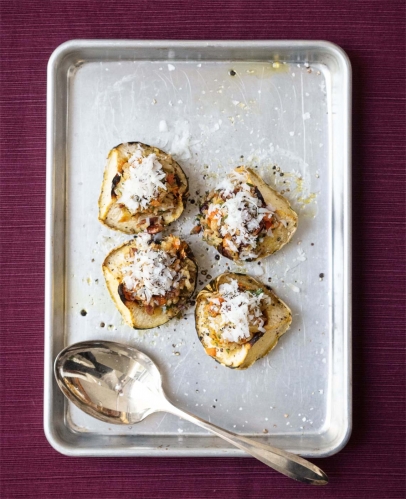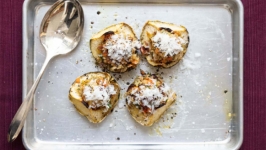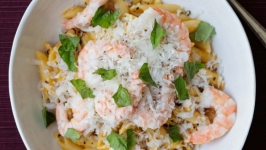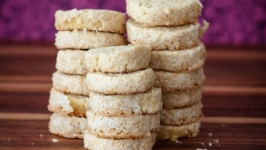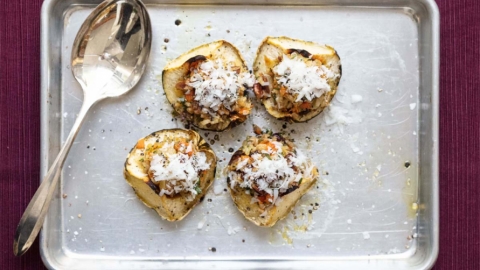Winter Squash Wonderland
Mid-fall can be a bit melancholy for those of us who aren’t quite ready to say goodbye to summer produce like heirloom tomatoes, melons and sweet corn. But rejoice! Fall’s bounty is here: apples, greens and a whole variety of fascinating squashes. (And, for the record, Merriam-Webster backs me up on the plural of squash as squashes.)
Winter squashes are quite different from their summer kin such as zucchini, pattypan and crookneck—they’re tough-skinned and firm, sweet and starchy. And they’re well suited to cool-season cooking methods like roasting. You’ll find them in ample supply on farmers’ market tables across Indiana, Kentucky and Ohio this fall. Here’s what to do with these funky-shaped, yellow-fleshed delicacies.
TYPES OF WINTER SQUASH
ACORN Dark green and deeply ridged, this squash is shaped like its namesake.
BUTTERNUT The most versatile of winter squashes, the bell-shaped butternut has an even-colored tan skin and smooth surface, with a deep orange flesh.
DELICATA Oblong in shape, mostly orange or yellow with flecks of green and shallow ridges. Very fresh, small- to medium-sized delicata squashes have tender skin that is edible. They’re also nice for stuffing.
HUBBARD Large, grayish-blue and football-shaped, the hubbard looks a little intimidating. (You may have one in your home as a fall decoration.) But it’s delicious, with a flavor that marries sweet potato and pumpkin.
PUMPKIN Find all kinds of heirloom types at local markets. Big jack-o’-lantern pumpkins aren’t good for eating, but smaller “pie pumpkins” are great for roasting.
SPAGHETTI Large, pale yellow and oblong, this type has flesh that separates into spaghetti-like strands when cooked. Top cooked spaghetti squash with your favorite marinara.
HOW TO COOK
Their firm texture and thick skin make winter squashes a little tough to handle, so a very sharp knife, steady cutting board and some elbow grease are essential. Thanks to their ridges, acorn squashes are difficult to peel; you’re better off cutting the squash in half pole-to-pole, scooping out the seeds and roasting with butter, brown sugar, and salt and pepper.
Hubbards and pie pumpkins can be stemmed and cut in half; scoop out the seeds and then roast until tender. For butternut squash, cut right above the bulbous part (that’s where the seeds are), then use a peeler to remove skin from the neck and the bulb. Cut the bulb in half and scoop out the seeds. Cut the flesh into chunks and roast or steam.
And about those seeds: Yes, you can roast them. Not just the seeds from your Halloween jack-o’-lantern, but any plump winter squash seeds will do. Scoop the seeds into a colander and rinse well, removing as much of the stringy stuff as you can. Spread the seeds on a rimmed baking sheet and dry overnight. Toss the seeds with a splash of olive oil and a good measure of seasoned salt and bake in a preheated 325°F oven for 20–30 minutes or until toasted and nicely browned.


